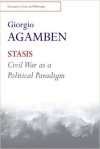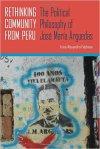Cross-posted from Posthegemony.
Antonio Gramsci’s reputation on the Left, the academic Left at least, is surprisingly solid and enduring, especially when compared to other figures within Western Marxism (Lukács? Adorno? Althusser?) who may once have been much cited but who are now marginal tastes at best. Other names that have similarly withstood the vagaries of time and the fickleness of fashion are perhaps Walter Benjamin and Raymond Williams, and what Gramsci shares with them (Benjamin in particular) is the fact that his writing was quite varied and even fragmentary, permitting a wide range of interpretations and re-readings in different circumstances and for diverse purposes. Indeed, famously this is particularly the case for Gramsci: his most important and influential work by far is the Prison Notebooks, an unfinished textual labyrinth of historical investigation and political creativity produced under the extreme conditions of incarceration and fascist censorship, that was not published until after his death and has still not been fully translated into English. From this cauldron of often ambiguous and sometimes obscure enquiry, many Gramscis or Gramscianisms have subsequently been reconstructed, informing bodies of thought and activism as diverse as the Eurocommunism of the 1970s, Anglo-American Cultural Studies in the 1980s and 1990s, and more recently a “neo-Communism” that pledges, at times more convincingly than others, to employ philological tools to be more faithful to the supposedly systematic character of Gramsci’s original thought. But it is in the nature of the form in which that thought has come down to us that there is much room for dispute and divergence.
 Some claim, especially in reaction to the version of Gramsci popular in Cultural Studies (for which a term such as “hegemony” can come to mean both everything and nothing), or to his “post-Marxist” appropriation by Ernesto Laclau and Chantal Mouffe, that turning to his pre-prison writings reveals the truer, more pragmatic and political, essence of an unadulterated Gramscianism. And no doubt Gramsci was at vastly more liberty to speak and write his mind before he was arrested and imprisoned by Mussolini’s police and judicial apparatus. Moreover, for the most part these comprise texts that were published, often in venues over which Gramsci had some measure of editorial control, and that as such appeared in something like finished form. It is here that we can read Gramsci the organizer and agitator, the Leninist Gramsci who threw his support behind both the Russian Revolution and the Turin Factory Council movement that sprung up in its wake.
Some claim, especially in reaction to the version of Gramsci popular in Cultural Studies (for which a term such as “hegemony” can come to mean both everything and nothing), or to his “post-Marxist” appropriation by Ernesto Laclau and Chantal Mouffe, that turning to his pre-prison writings reveals the truer, more pragmatic and political, essence of an unadulterated Gramscianism. And no doubt Gramsci was at vastly more liberty to speak and write his mind before he was arrested and imprisoned by Mussolini’s police and judicial apparatus. Moreover, for the most part these comprise texts that were published, often in venues over which Gramsci had some measure of editorial control, and that as such appeared in something like finished form. It is here that we can read Gramsci the organizer and agitator, the Leninist Gramsci who threw his support behind both the Russian Revolution and the Turin Factory Council movement that sprung up in its wake.
Yet these early texts hardly resolve the Gramscian enigma. For one thing, it is evident that Gramsci’s restless mind was continually developing, experimenting, and trying out new ideas even (perhaps especially) once it was locked up in a prison cell. We have no reason to assume that he thought the same way about things in 1929 as he did in 1919. For another, this corpus is no less fragmentary than the Prison Notebooks, consisting as it does on the whole of short pieces written to a deadline on topical debates for the socialist press. If anything, prison gave Gramsci the freedom to work more consistently and coherently on the key concepts and underlying concerns that mattered to him. Finally, it is not as though censorship and, perhaps above all, self-censorship did not shape and constrain these articles that he knew would see the light of day, by contrast to the long labour of the notebooks that had no immediate audience. After all, throughout this period from 1914 to 1926, Gramsci was quite self-consciously (and unabashedly) engaged in a project of what he himself would call propaganda.
Take for instance Gramsci’s paean to the Bolshevik state, published as “The Price of History” in June 1919. Here he tells us that “The Russian communists are a first-class ruling elite. [. . .] Lenin has revealed himself as the greatest statesman of contemporary Europe [. . .] a man whose vast brain can dominate all those social energies, throughout the world, which can be turned to the benefit of the revolution” (92). Hence “the State formed by the Soviets has become the State of the entire Russian people” thanks to “the assiduous and never-ending work of propaganda, elucidation and education carried out by the exceptional men of the Russian Communist movement, directed by the lucid and unstoppable will of the master of them, Nikolai Lenin” (93-94). In short, “Russia is where history is; Russia is where life is” (95). Yet for all that this article manifests Gramsci’s undoubtedly heartfelt belief in the priority of state-building (“A revolution is a genuine revolution [. . .] only when it is embodied in some kind of State” [92]), one does not have to be an egregiously suspicious reader to wonder whether the hyperbole understandably directed to praise of the leaders of the first successful workers’ revolution might not extend also to the subsequent affirmation that “Society can only exist in the form of a State” (93). What, after all, has happened here to the Gramsci who is famously the champion of organizations of “civil” society, relatively autonomous from or even hostile to the state apparatus?
That other Gramsci, of what we might in shorthand call “society against the state” is indeed visible in these writings. Perhaps most interestingly, he can be found for example in a piece entitled “Socialism and Italy” in which he condemns “liberals, conservatives, clerics, radicals, republicans, nationalists, reformists” (27) as being, precisely, creatures of the state but not of society, or at least not of the Italian nation. Indeed, he offers here a hint of a counter-history of Italian nation formation, not as a process driven by Cavour and the Piedmontese bourgeoisie (who established a relationship to the Italian South that still remained, Gramsci repeats several times, “colonial”), but as the product of Italian socialism: over the course of what he calls a “plebeian Renaissance,” “Italy has become a political unity, because a part of its populace has united around an idea, a single programme. And socialism, socialism alone, was able to provide this idea and this programme” (28, 29). In other words, there is society despite the state, and in the face of the state’s resolute provincialism and particularism. This is “the history of the Italian people [that] has yet to be written–its secret, its spiritual history” (28). And maybe this is the history of the Russian people (and the Russian revolution) that also has yet to be written, even by Gramsci himself.
Again, none of this is to deny the strong statist tendency within Gramsci’s thought. There is no doubt at all that he saw the political objective of the working class movement in terms of the construction of (to borrow the title of the journal he co-founded in 1919) a “new order” premised on a new state guided by the Communist Party that he would also end up co-founding. As he put it even when he was, previously, a member of the Socialist Party of Italy, “The Party is a State in potentia, which is gradually maturing: a rival to the bourgeois State, which is seeking, through its daily struggle with this enemy, and through the development of its own internal dialectic, to create the organs it needs to overcome and absorb its opponent” (4). This is what will later be cast as the struggle for hegemony.
And yet there is also a tension here evident even in the thought of this early, manifestly Leninist, Gramsci. It is a tension perhaps best characterized in terms of two concepts that he continually employs that are both perhaps dissonant to our contemporary ears: “spirit” and “discipline.” As a party man, Gramsci is a great believer in discipline, which is a function of political leadership and education. Italians above all, he tells us in the few pieces that are dedicated to what we would now recognize as “culture” (articles on sport, for instance, and drugs), are a disorderly lot. Their preference for card games, for example, full of “shouting, fists slamming on the table and often in the faces of opponents,” reveals a country that is “backward economically, politically and spiritually” (73, 74). And yet it is precisely this spiritedness that indicates an alternative (and maybe posthegemonic) history, far from the rigidity and farcicalness of the state form. For sure, in Gramsci’s view, these “disorderly and chaotic energies must be given a permanent form and discipline” (97). But without them, without spirit, Italy is nothing.







